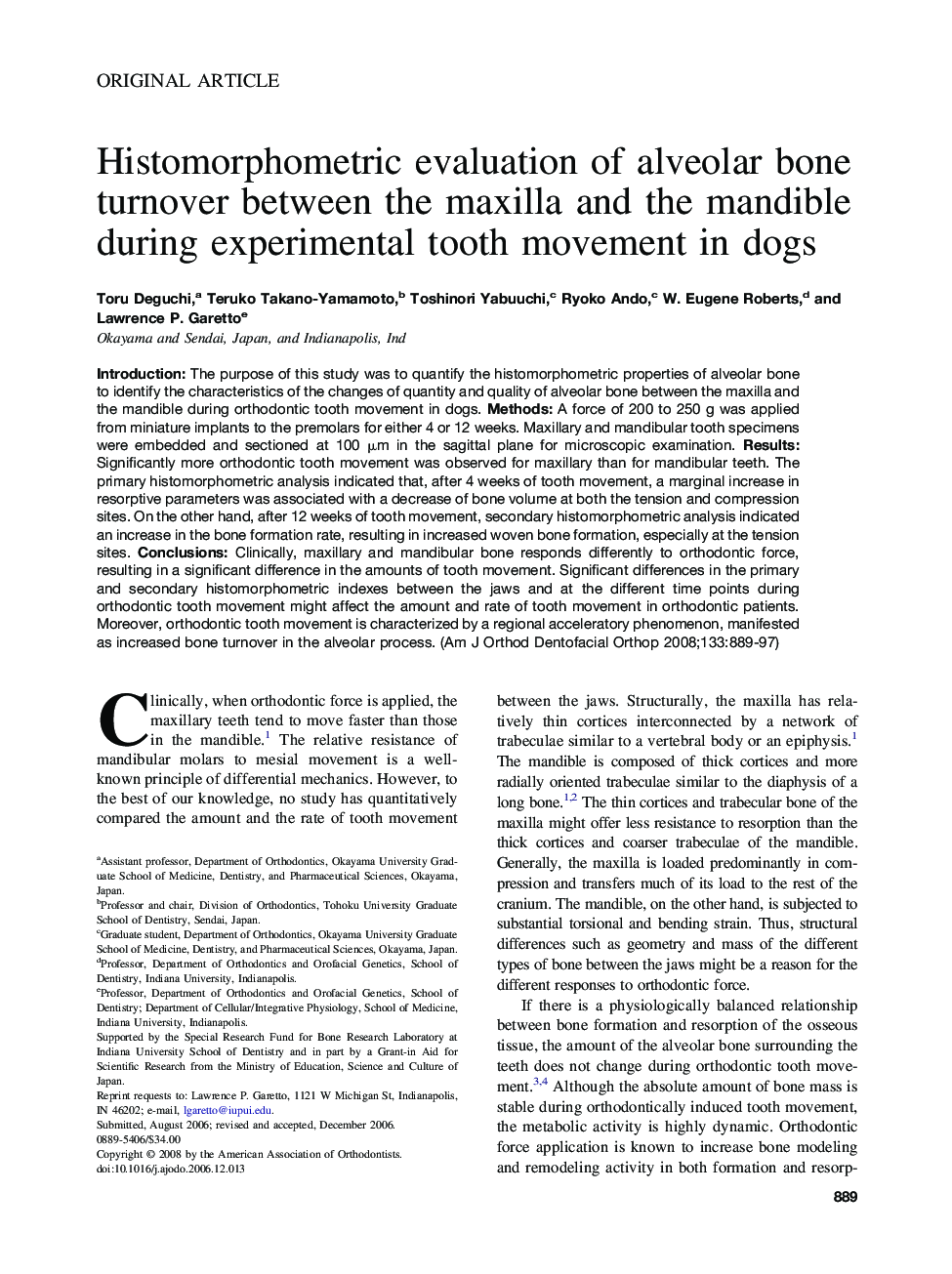| Article ID | Journal | Published Year | Pages | File Type |
|---|---|---|---|---|
| 3119100 | American Journal of Orthodontics and Dentofacial Orthopedics | 2008 | 9 Pages |
Introduction: The purpose of this study was to quantify the histomorphometric properties of alveolar bone to identify the characteristics of the changes of quantity and quality of alveolar bone between the maxilla and the mandible during orthodontic tooth movement in dogs. Methods: A force of 200 to 250 g was applied from miniature implants to the premolars for either 4 or 12 weeks. Maxillary and mandibular tooth specimens were embedded and sectioned at 100 μm in the sagittal plane for microscopic examination. Results: Significantly more orthodontic tooth movement was observed for maxillary than for mandibular teeth. The primary histomorphometric analysis indicated that, after 4 weeks of tooth movement, a marginal increase in resorptive parameters was associated with a decrease of bone volume at both the tension and compression sites. On the other hand, after 12 weeks of tooth movement, secondary histomorphometric analysis indicated an increase in the bone formation rate, resulting in increased woven bone formation, especially at the tension sites. Conclusions: Clinically, maxillary and mandibular bone responds differently to orthodontic force, resulting in a significant difference in the amounts of tooth movement. Significant differences in the primary and secondary histomorphometric indexes between the jaws and at the different time points during orthodontic tooth movement might affect the amount and rate of tooth movement in orthodontic patients. Moreover, orthodontic tooth movement is characterized by a regional acceleratory phenomenon, manifested as increased bone turnover in the alveolar process.
